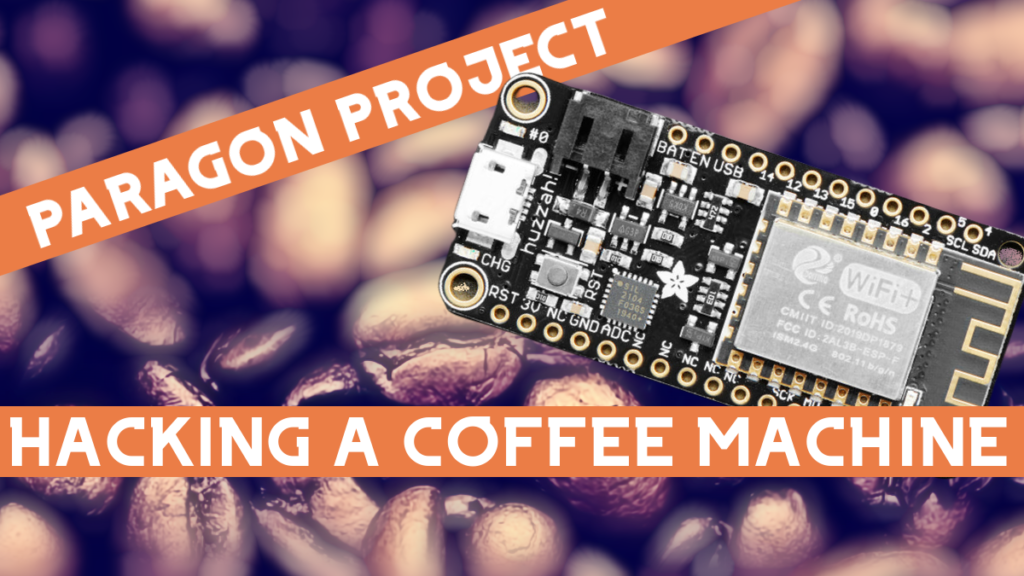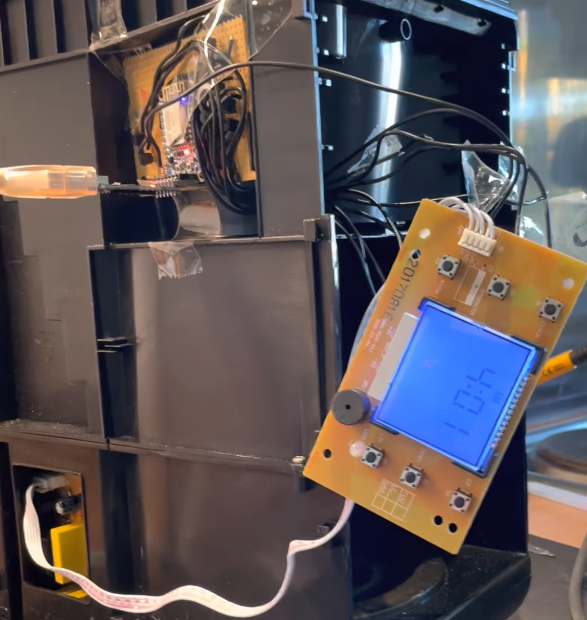Paragon Project: Hacking a Coffee Machine

Winter is upon us. For those of us in the northern hemisphere, the days are growing shorter and it’s harder and harder to get out of bed. In this installment of our Paragon Projects series, we’re looking at a project that’ll be even more useful as the days grow shorter: hacking a coffee machine.
This project is actually two years old, but I’d say it’s just as relevant today as it was in November 2021.
This was put together and shared by Andy Bradford. Andy shared that the problem was that the coffee machine would make a cup of coffee, but sometimes “I would get it brewing and forget to go back to collect the drink, leaving it going stale on the hot plate so I decided to see if I could connect it to my network for notifications and control.”
I do that weekly. So if you’re like me, then this project is for you!\

Andy prefaces the post with the following information: “This post is for information only. It is not a guide. Do not try this yourself. If you ask for help, I will not be able to give it.”
So I guess you’re on your own if you want to pursue a similar project. But nevertheless, I think this is both a useful and an awesome little hack. And Andy has shared the code on GitHub under an MIT license.
Hardware
Andy took the coffee machine apart and discovered that it relies on two boards – one is to take care of the high voltage switching, while the other is a microcontroller that manages all the other important stuff.
So, this project relies on manipulating the microcontroller on the coffee machine. The microcontroller should take over control in order to decide how strong the coffee will be, whether or not to keep it warm, to brew coffee, and to send a message when the coffee is ready.
Here, Andy went with an Adafruit Huzzah ESP8266 (but you can now get an Adafruit Huzzah ESP32, which is an updated version).
Andy was messing with a Morphy Richards Verve Filtered Coffee Maker. So the information about the project is specific to this coffee maker:

But with a bit of ingenuity, something like this can certainly be done with many, if not most, electric coffee makers.
Andy mentions that the 5V power supply from the coffee machine wasn’t strong enough to power the Huzzah. So a separate USB cable became necessary to get power to the board.
All that required Andy to cut a hole in the side of the coffee machine and fasten a Veroboard into it. The Veroboard holds the Huzzah, the circuitry, and the resistors in place inside the coffee machine.

Software
For this, Andy used the Arduino IDE.
MQTT auto-discovery, which is an extension built on top of the MQTT protocol. This way, the coffee machine can communicate with Home Assistant. Home Assistant is, of course, free and open-source software that helps with a full interface for home automation.
If you’re interested in learning more about the fundamentals MQTT for your own project, you can check out our article, “An Overview of MQTT“. In fact, PiCockpit itself relies on MQTT – so we’re obviously big fans!

Andy has shared all of the code for the software over on GitHub. If you want to see the code yourself, you can check it out here.
Conclusion
So there you have it, folks – hacking a coffee machine with an ESP8266! It’s the ideal automated coffee machine that’ll text you when your coffee is ready!
If you want more details, head over to Andy Bradford’s website here.
If you want to check out more amazing projects, you can find them all by clicking on this button:
And if you haven’t yet, be sure to subscribe to our Newsletter. We share many of the projects we feature in this series.
How would you hack your coffee machine?